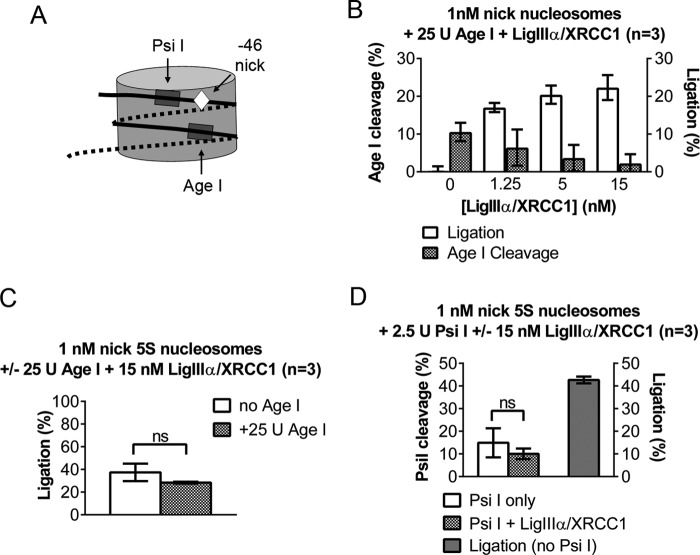FIGURE 6.
LigIIIα-XRCC1 disrupts only histone-DNA contacts close to the site of the nick. A, schematic depicting the relative position in DNA nick-containing nucleosomes of restriction sites used to probe the extent of nucleosome disruption during ligation. B, ligation of a DNA nick located 46 nt from the dyad axis does not interfere with nucleosome-mediated protection from cleavage at an AgeI site. 1 nm −46 nick nucleosomes were incubated with 25 units of AgeI together with 1–15 nm LigIIIα-XRCC1, and ligation and cleavage amounts were determined as described under “Experimental Procedures.” AgeI cleavage was calculated as a fraction of naked DNA, whereas nucleosome ligation was reported as an absolute fraction. C, the presence of AgeI in the ligation reactions reported in Fig. 2B had no significant (ns) impact on the efficiency of ligation of the −46 nicks in nucleosomes or in naked −46 nick DNA controls (where ligation reached ∼77%, data not shown). D, the left axis shows that 15 nm LigIIIα-XRCC1 did not appreciably affect cleavage at a PsiI site located approximately midway between the −46 DNA nick and the edge of the nucleosome (A and Fig. 1A). The right axis shows efficient ligation of −46 nick nucleosomes in the absence PsiI. Ligation also occurred in the presence of PsiI but could not be quantified, as the Psi I site lies between the DNA nick and the 5′ 32P label. Error bars represent standard deviations. ns = not significant; p < 0.05.

